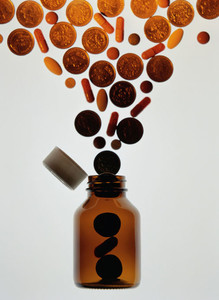In Europe, the regulatory frameworks for biosimilars are largely established, with both general guidelines and product specific guidelines put in place by the EMA, covering human insulin, somatropin, human growth hormone, erythropoietin, interferon-alpha, low molecular weight heparin and monoclonal antibody. The agency is also currently working on draft guidelines for a number of other product class specific guidelines, including interferon-beta and follicle stimulation hormone.
Europe has been consistent in its approach to biosimilars and has taken the regulatory risks in its stride [1]. The core principle of the European biosimilars guidelines is to prove ‘similarity’ and not ‘sameness’. Just some of the issues that have already been addressed by the EMA include:
The process is the product
Unlike more common small-molecule drugs, biologicals generally exhibit high molecular complexity and micro-heterogeneity. They are therefore very sensitive to manufacturing process changes, including the choice of the cell type, along with production, purification and formulation processes. In view of the complexity and sensitivity of biologicals to the manufacturing process, no two biotech medicines can be exactly the same, hence the term ‘biosimilar’ and not ‘biogeneric’.
Rare adverse events (PRCA)
Specific reference is made to include assessment of the incidence of antibody-induced pure red cell aplasia (PRCA) within the pharmacovigilance plan for epoetin biosimilars.
Variable immunogenicity
Many things can affect the immunogenicity of biosimilars, including formation of protein aggregates, presence of impurities, etc… The EMA addressed this via a guideline on immunogenicity assessment (EMEA/CHMP/BMWP/14327/2006), which may necessitate further systematic immunogenicity testing might become necessary after marketing authorisation.
Other issues still to be addressed by the EMA include data extrapolation and post-approval requirements for biosimilars.
It is expected that the EMA will in the future accept interim endpoints for marketing approval, with final endpoint data being collected post-authorisation, in order to allow early market entry. However, post-approval requirements for biosimilars may be toughened, with requirements such as additional long-term immunogenicity and safety, and additional indication-specific safety data being requested.
The rate of progress by the US with respect to pushing forward with the expected framework and approval requirements for biosimilars has been slow compared to the EU, which approved its first biosimilar back in 2006. One of the main problems is that the US, although it now has a legal pathway for biosimilars (with the approval of the Biologics Price Competition and Innovation [BPCI] Act, which was signed into law on 23 March 2010 by President Barack Obama), does not yet have a practical pathway with guidance defined by the FDA.
It is suspected that US regulatory and intellectual property barriers are likely to make any biosimilars pathway unusable. This is not the first time that doubts have been expressed over whether the biosimilars pathway in the US will ever be used [2, 3]. Disadvantages with the abbreviated pathway include the 12-year exclusivity of the originator, possible interference from the originator company and patent issues.
Many believe that the standard Biologic License Application (BLA) is more likely to be used than the abbreviated BLA (aBLA) process, as this may circumvent the 12-year exclusivity requirement in the BPCI Act for biosimilars. This belief is backed up by the FDA’s acceptance of Teva’s BLA for its filgrastim biosimilar, Neutroval. Other reasons for biosimilar manufacturers avoiding the aBLA include unclear requirements for clinical data and the need for public disclosure of proprietary data.
Related articles
Timing of the launch of biosimilars in Europe
How cheap will biosimilars need to be
The market for biosimilars
Development of biosimilars
Manufacturing of biosimilars
Challenges ahead for biosimilar development
Questions over US biosimilars pathway in light of Teva’s BLA
EGA meeting London 2011: biosimilars competitiveness in the EU
US biosimilars pathway unlikely to be used
References
1. Gal R. Biosimilar development is progressing, but bigger challenges are ahead. 9th EGA International Symposium on Biosimilar Medicines; 2011 Apr 14; London, UK.
2. GaBI Online - Generics and Biosimilars Initiative. US biosimilars pathway unlikely to be used [www.gabionline.net]. Mol, Belgium: Pro Pharma Communications International; [cited 2011 July 07]. Available from: www.gabionline.net/Guidelines/US-biosimilars-pathway-unlikely-to-be-used
3. GaBI Online - Generics and Biosimilars Initiative. Questions over US biosimilars pathway in light of Teva’s BLA. [www.gabionline.net]. Mol, Belgium: Pro Pharma Communications International; [cited 2011 July 07]. Available from: www.gabionline.net/Biosimilars/General/Questions-over-US-biosimilars-pathway-in-light-of-Teva-s-BLA








 0
0











Post your comment